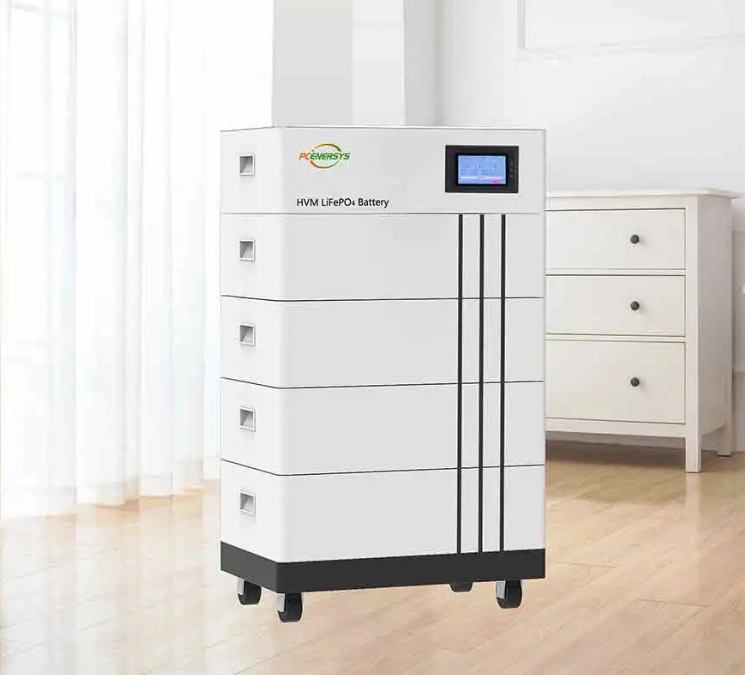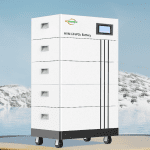As energy demand grows, user demand for efficient and sustainable energy storage batteries gradually increases. LiFePO4 high voltage batteries are currently the most upgraded and used batteries for energy storage users. Offering numerous advantages over traditional energy storage systems, retrofitting existing systems with LiFePO4 high-voltage batteries can significantly improve performance, reliability, and service life.
Why choose LiFePO4 High Voltage Batteries for transformation?
Why is everyone keen on choosing LiFePO4 high voltage batteries when upgrading existing energy storage systems? In fact, they have higher energy density, longer cycle life, and higher safety than traditional lead-acid or nickel-based batteries. Additionally, they have low self-discharge rates and can operate efficiently over a wide temperature range. This is also better suited for renewable energy systems, electric vehicles, and grid storage applications. Upgrading to LiFePO4 high-voltage batteries can also significantly improve energy efficiency and overall system performance, and their environmental characteristics are also more consistent with sustainability goals.

Assess the compatibility of existing systems
Of course, we must carefully evaluate before upgrading to LiFePO4 high voltage batteries. The first step is to confirm that the voltage of the LiFePO4 high voltage battery matches the voltage requirements of the existing system. LiFePO4 batteries typically run at different voltages depending on their configuration, and you need to ensure that the system’s inverter, charge controller, and other components can handle their high voltages. In addition, the physical size and weight of the LiFePO4 high voltage battery also need to be evaluated to ensure that it will fit in the existing space allocated to the battery. It also needs to be verified whether the existing charging system is compatible with the charging requirements of LiFePO4 batteries. Usually, LiFePO4 batteries have specific voltage and current parameters that allow them to achieve safe and efficient charging.

Choosing the right LiFePO4 high-voltage battery
When upgrading to LiFePO4 high voltage batteries, choosing the right cells is crucial to ensuring they deliver optimal performance. Selecting the LiFePO4 high-voltage battery voltage needs to meet the voltage requirements of the existing system. Common high voltage configurations include 48V, 72V and higher. Verify that your inverter, charge controller, and other electrical components are compatible with the new battery’s voltage.

Select a battery with sufficient capacity to meet your energy storage needs, considering future expansion and scalability options. When choosing a battery, look for a reliable battery management system (BMS). BMS monitors and manages the battery’s charge status, voltage, current, and temperature to ensure safe and efficient operation. Check whether the BMS is compatible with your system’s communication protocol, such as CAN bus or RS485, for seamless integration. The most important thing is to choose batteries from a reputable manufacturer known for quality and reliability.
Installation and integration process
Start by carefully planning the installation layout, considering space constraints and ventilation requirements. LiFePO4 high-voltage batteries generate less heat than traditional batteries but still require proper ventilation to ensure safe operation. So, the battery must be securely installed in a location that is easy to maintain and monitor. Next, the batteries are connected to the existing electrical system, connecting them in series or parallel. Configuring the BMS to monitor and manage the performance of LiFePO4 high-voltage batteries. The BMS should be programmed to track key parameters such as voltage, current, temperature, and state of charge. Proper configuration ensures the battery operates within safe limits and achieves optimal performance.
Test and debug the retrofitted system
After installation and integration are completed, the modified system is tested and debugged. This includes verifying that all components are functioning properly and that the battery is functioning as expected. The first thing to do is conduct a series of electrical tests to ensure the battery is connected correctly and there are no wiring issues. Check that the voltage levels and current flow are correct and there are no short circuits or leaks. Accurately measure these parameters using appropriate test equipment.
Performance testing involves running the system under various load conditions to ensure the LiFePO4 high-voltage battery meets your application’s needs. We need to monitor how the system performs over time. Finally, the system is debugged according to the test situation to complete all settings and configurations, ensuring that the BMS is properly calibrated and that all safety protocols are in place.
Make your home energy storage system more reliable
Upgrading to LiFePO4 high-voltage batteries offers many benefits, including improved performance, enhanced safety, and increased efficiency. You can successfully upgrade your energy storage system by carefully evaluating your existing setup, selecting the right batteries, and following a structured installation and testing process as described in the guide.










